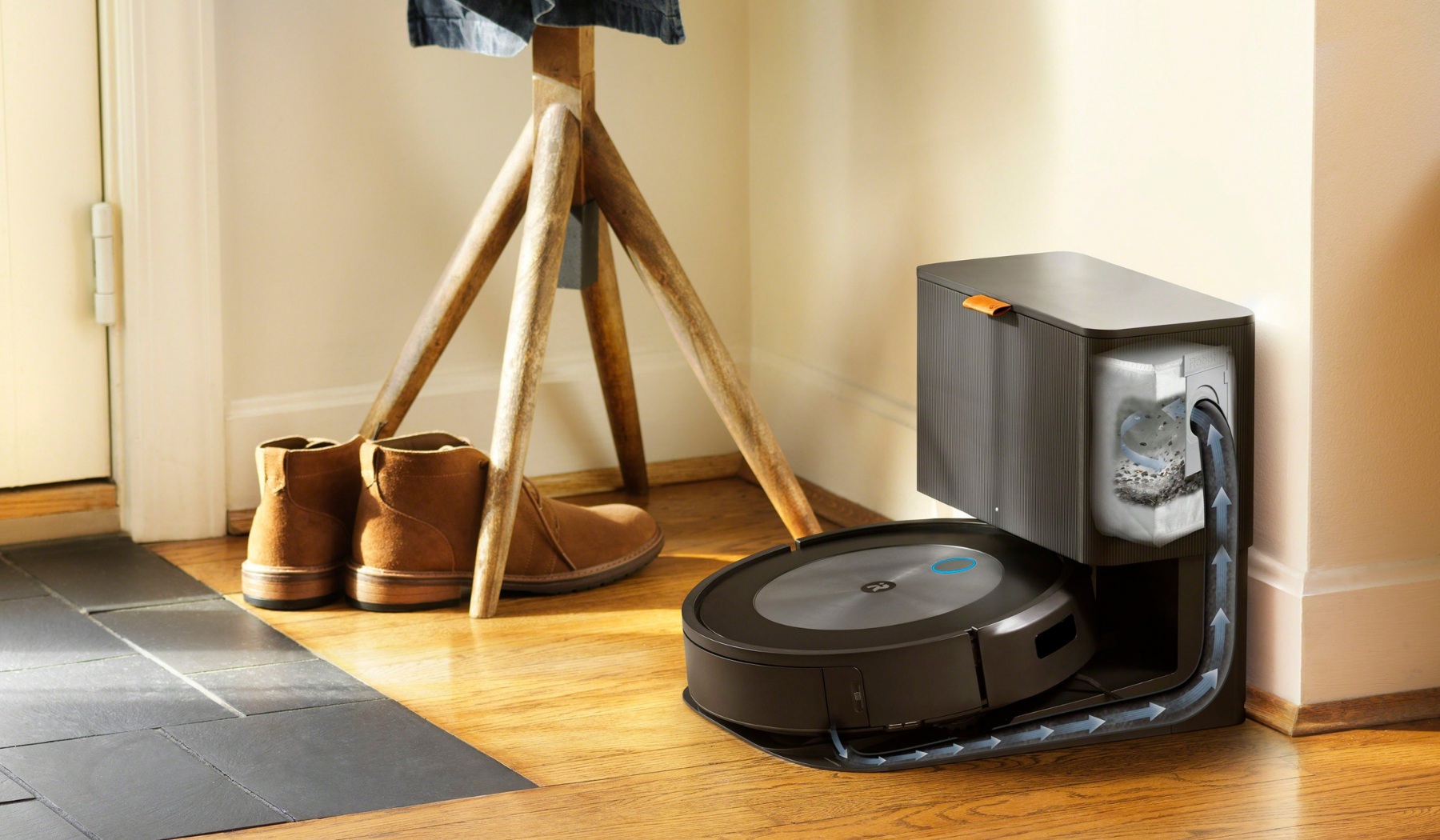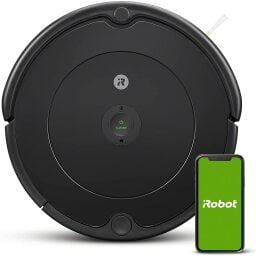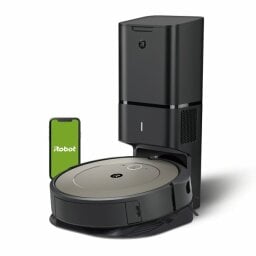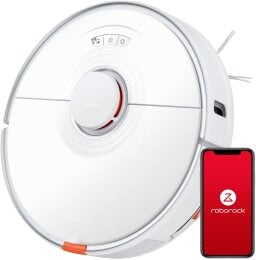
UPDATE: Jun. 1, 2022, 12:45 p.m. EDT Updated to include the best deals on robot vacuums from iRobot, Shark, Roborock, and more.
We’ve compiled the best deals on robot vacuums from brands like iRobot, Shark, and Ecovacs. Here are the ones to grab as of June 1:
-
BEST BUDGET DEAL: The Roomba 694 loosens and lifts with a three-stage system, working harder on dirtier areas — $179.99
$274($94.01)
-
BEST SELF-EMPTYING DEAL: The Roomba j7+ cleans competently, self-empties, and avoids cords and pet waste — $589.99
$799.99(save $210) -
BEST ROBOT VACUUM/MOP DEAL: The Roborock S7 can sweep and scrub specific rooms and won’t get carpet wet — $499.99
$649.99(save $150)
Only three things are certain in life: Death, taxes, and a few days each month when you need to vacuum but just don’t have time. Whether you detest the chore or get a little bummed when you can’t have that satisfying dance with your Dyson, a robot vacuum is a lifesaver. Shop models on sale below.
Robot vacuums under $200
Why we like it
The 694 is iRobot’s baseline model, offering a standard clean that you can trust to keep floors tidy on a daily basis. Hard floors are a breeze and carpets are tackled efficiently with Roomba’s loosen-then-lift strategy. Schedule cleanings and get custom cleaning suggestions in the iRobot app.
More robot vacuums under $200
-
ionvac Smart Clean 2000 — $97
$179.88(save $82.88) -
Eufy 11S — $149.99 $229.99 (save $80)
-
Roborock E4 — $239.99
$299.99(save $60) -
Eufy 15C Max – $189.99
$299.99(save $90) -
Ecovacs G30 Edge — $239.99
$339.99(save $100)
Robot vacuums under $500
Why we like it
The most affordable self-emptying Roomba is the i1+, which unleashes three times the suction of the baseline Roomba 694. Roombas don’t benefit from smart home mapping until later models, but the i1 still makes its way around efficiently and works harder on areas with more dirt detected. The dock holds up to 60 days’ worth of debris.
More robot vacuums under $500
-
iRobot Roomba i1 — $229
$399.99(save $170.99) -
iRobot Roomba i3 Evo — $249
$349.99(save $100.99) -
Shark AI AC22501S — $394.50
$549.99(save $155.49) -
iRobot Roomba i3+ Evo — $399
$549.99(save $150.99) -
iRobot Roomba i7+ (renewed) — $399.99
$556.69($150.70) -
Shark IQ AV1010AE XL — $455.65
$599.99(save $144.34) -
Neato Robotics D9 — $449
$699.99(save $250.99)
Robot vacuums under $800
Why we like it
Roborock also debuted a mid-range self-emptier (compared to its other self-emptiers, which start at $949.88.) The Q5+ is already seeing a handful of five-star reviews for its nimble navigation, floor coverage, and hearty suction. The Q5+ comes with a dock that deals with its own debris for seven weeks at a time.
More robot vacuums under $800:
-
iRobot Roomba j7+ — $589.99
$799.99(save $210)
Robot vacuum and mop hybrids and dedicated robot mops
Why we like it:
Don’t sleep on this rare discount on one the best overall robot vacuum and mops. The Roborock S7 has reliable suction that performs well on both hardwood and carpet. Attaching the mopping pad gives your floor a scrub, too, but won’t soak your rugs. Use the app to send the S7 to specific rooms or set a schedule.
More hybrids and robot mops on sale
-
Roborock E4 — $219.99
$379.99(save $160) -
Roborock E5 — $229.99
$359.99(save $130) -
Roborock S6 Pure — $359.99
$599.99(save $240) -
Yeedi Vac Station — $369.99
$549.99(save $180) -
Ecovacs T8 Aivi — $499.99
$799.99(save $300) -
Ecovacs N8 Pro+ — $499.99
$699.99(save $200)
Are robot vacuums worth it?
The control of an upright vacuum comes with its own type of satisfaction. But if you’re not one to classify cleaning as cathartic, a robot vacuum could erase that huge, agonizing task from of your chore list. (And did we mention the joy of having “first day clean” floors all the time?)
But whether robot vacuums are worth it or not comes with a caveat: It can’t be just any robot vacuum. A cheap robovac that doesn’t do the job right — scattering dust, bumping into walls, getting stuck on area rugs — might actually create more work for you.
What to consider when buying a robot vacuum
-
Suction power: A vacuum is the one purchase that you hope sucks a lot. Suction power is typically measured in Pascals (Pa), with most current vacs ranging between 1,500 Pa and 3,000 Pa. Stronger sucking will be needed to pick up heavier pieces of debris (be sure to set a no-go zone around Legos) and to pull matted-down pet hair from rugs.
-
Floor type: Carpeting and high pile rugs will probably require stronger suction than hard floors, as well as special features like an extra-wide or self-cleaning brush roll to prevent hair from wrapping and clogging. Folks in homes with multiple floor types might consider a bigger, sturdier robot vacuum that can hurl itself and its wheels over mats, rugs, and transitions from carpet to hard floors.
-
Automatic emptying: Because robot vacuums are typically under four inches tall, their onboard dust bins are also small — which means they frequently require emptying. (Dustbins fill up particularly quickly in homes with pets.) A self-emptying vacuum takes that job out of your hands, emptying itself into a larger dustbin in its charging dock. These larger bins can typically hold weeks of dirt without needing to be cleaned or dumped out.
-
Home layout: Every robot vacuum is equipped with sensors and drop detection. But if your home has lots of rooms, lots of turns, or lots of close-together furniture, you’ll have fewer navigation issues with an advanced model that uses intelligent mapping to remember exactly how your home is laid out, including labeling of specific rooms, mental notes of staircases, and ability to deploy zone cleaning.
-
Low-profile furniture: No one should have to be scared about what’s accumulated under their couch over the past year. A robot vacuum measuring three inches or less in height should be able to scoot under most low-hanging couches and beds.
-
Battery life and square footage: One of the main complaints people have about their robot vacuum is that it craps out in the middle of the floor. Larger spaces require more time to clean, and it all depends on how annoyed you’ll be if it only finishes a few rooms at a time. Average run times for the list below range between 90 and 200 minutes, which translate to about 500 and 2,800 square feet covered on one charge.
-
App control: WiFi-enabled robot vacuums can be synced with a smartphone app to control scheduling, manual start, cleaning settings, as well as telling your vac to make its rounds when you’re not home. Low-end models that don’t connect to WiFi will usually come with a separate remote. If you’re used to asking Alexa or Google to turn off the lights or tell you the weather, a model with voice integration will blend in nicely.




